site search
online catalog
IDENTIFIED CONFEDERATE-USED M1842: STOCK CARVING BY ARCHIBALD McINTYRE CO. K 1st SOUTH CAROLINA VOLS, LATER KILLED AT ANTIETAM

Hover to zoom

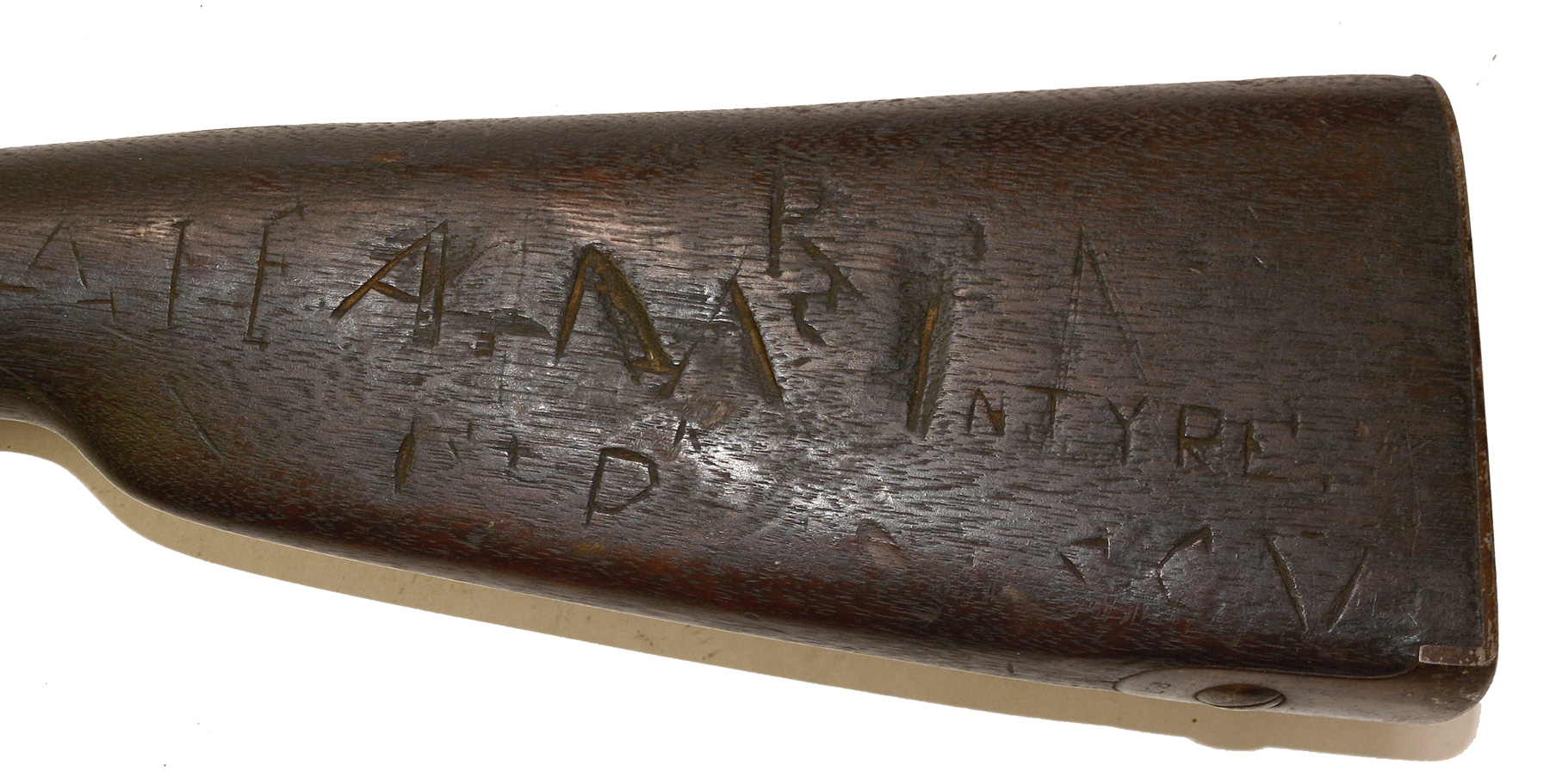


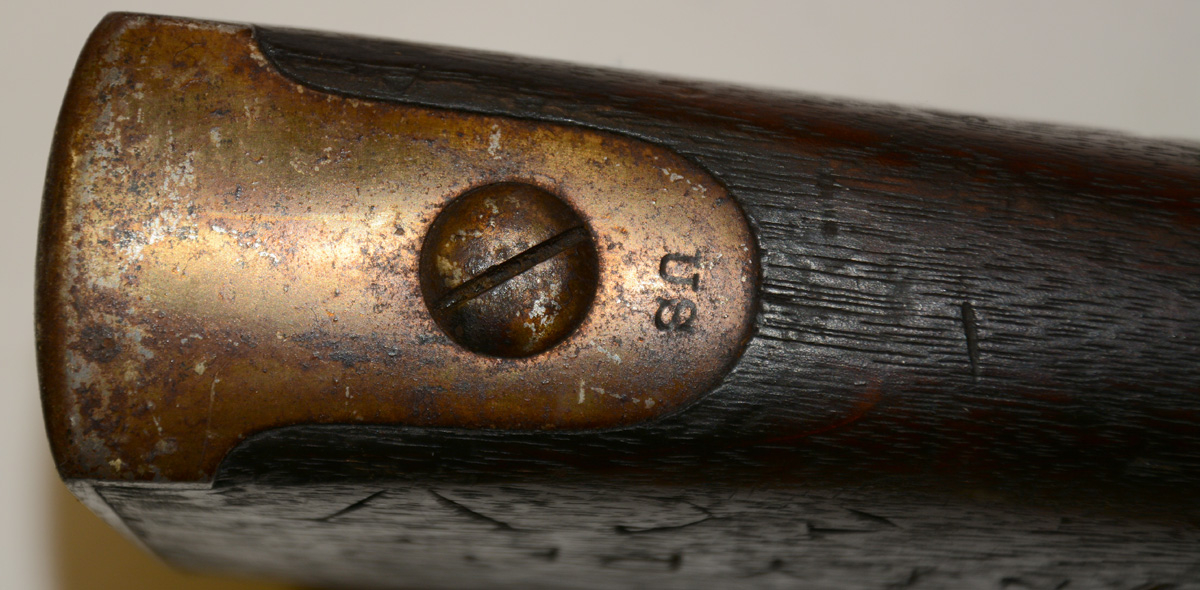


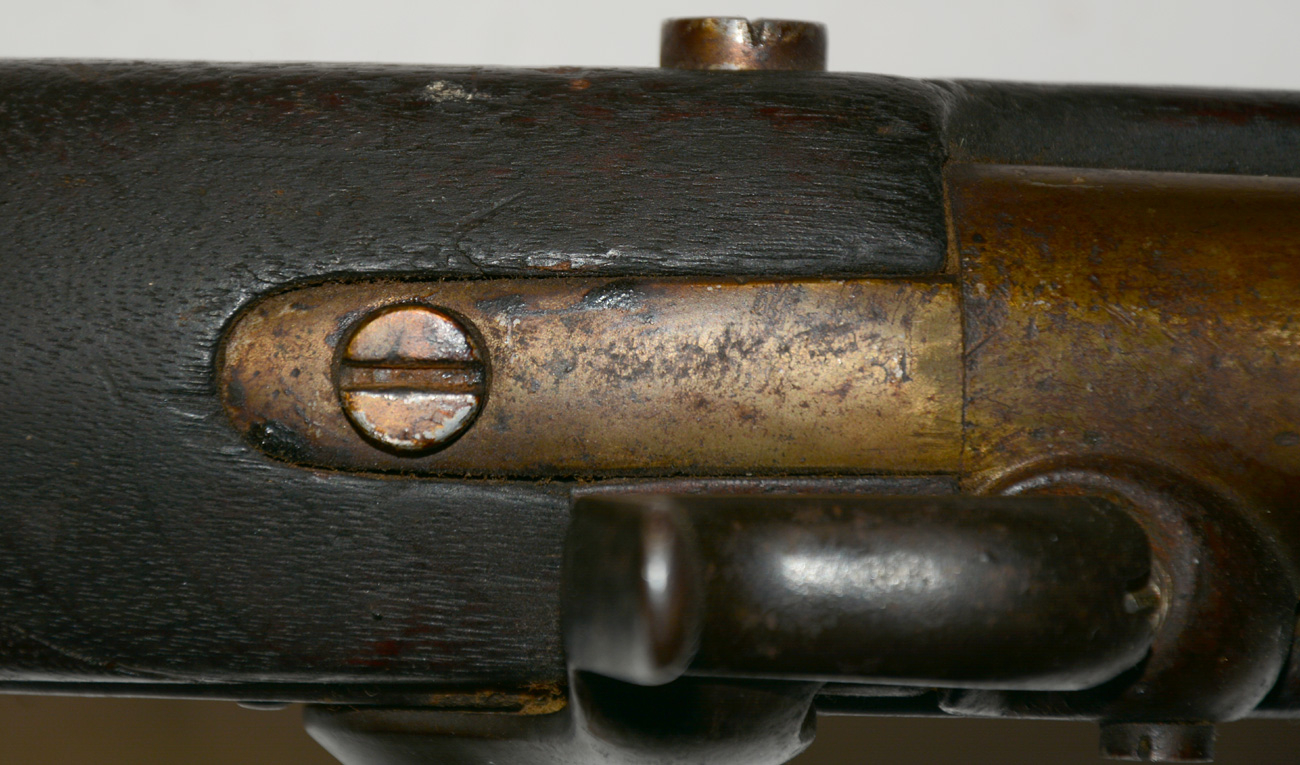
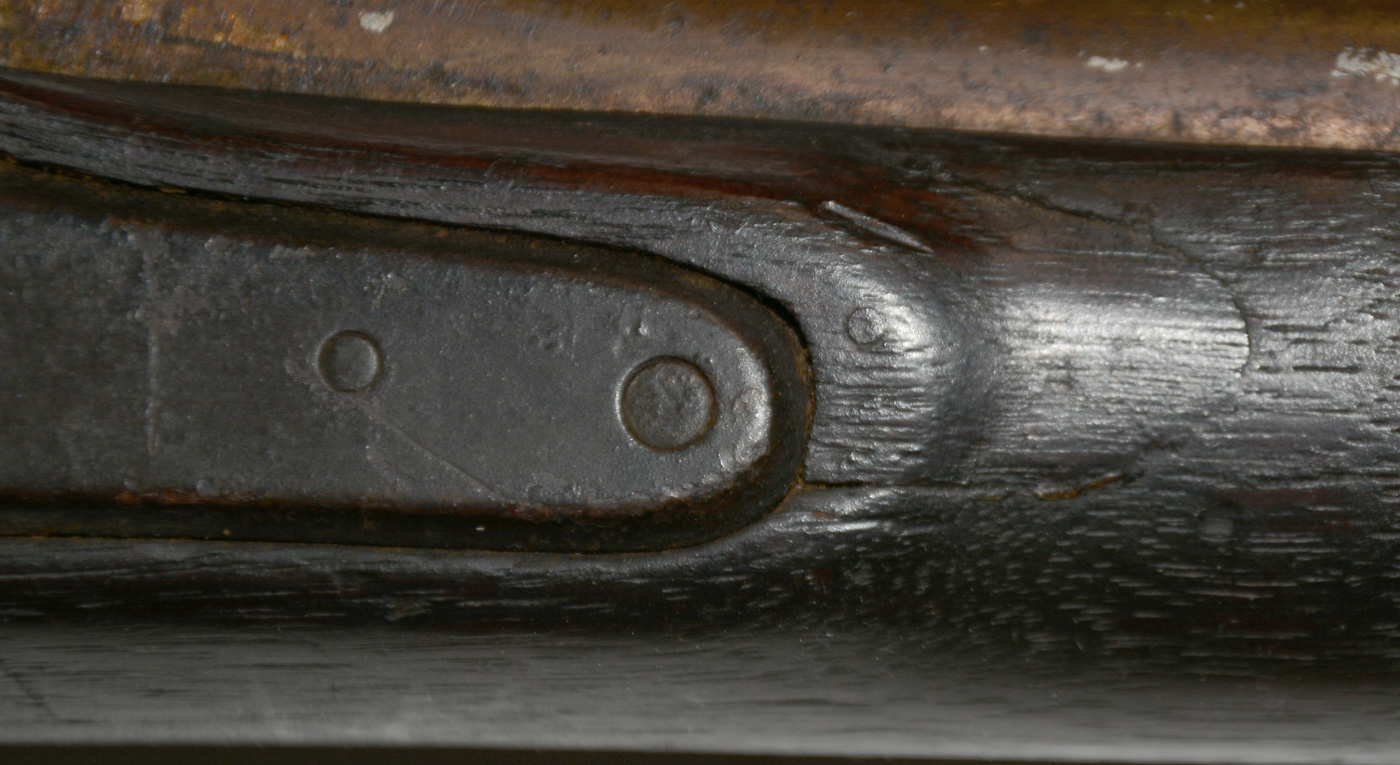

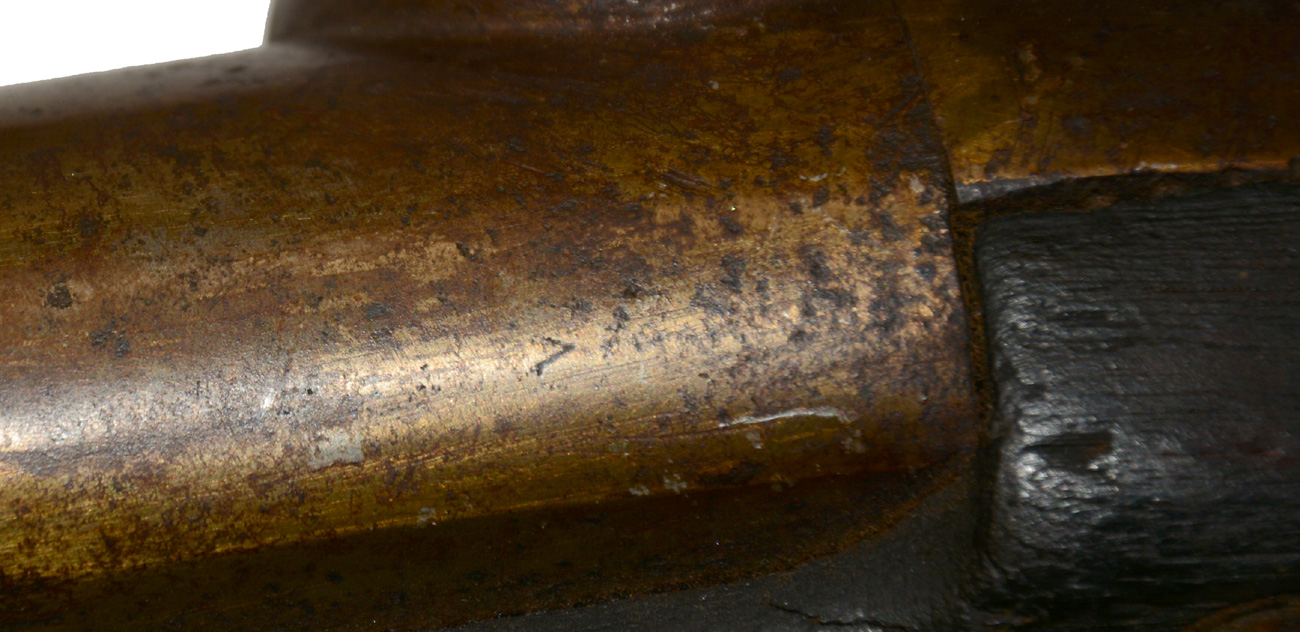
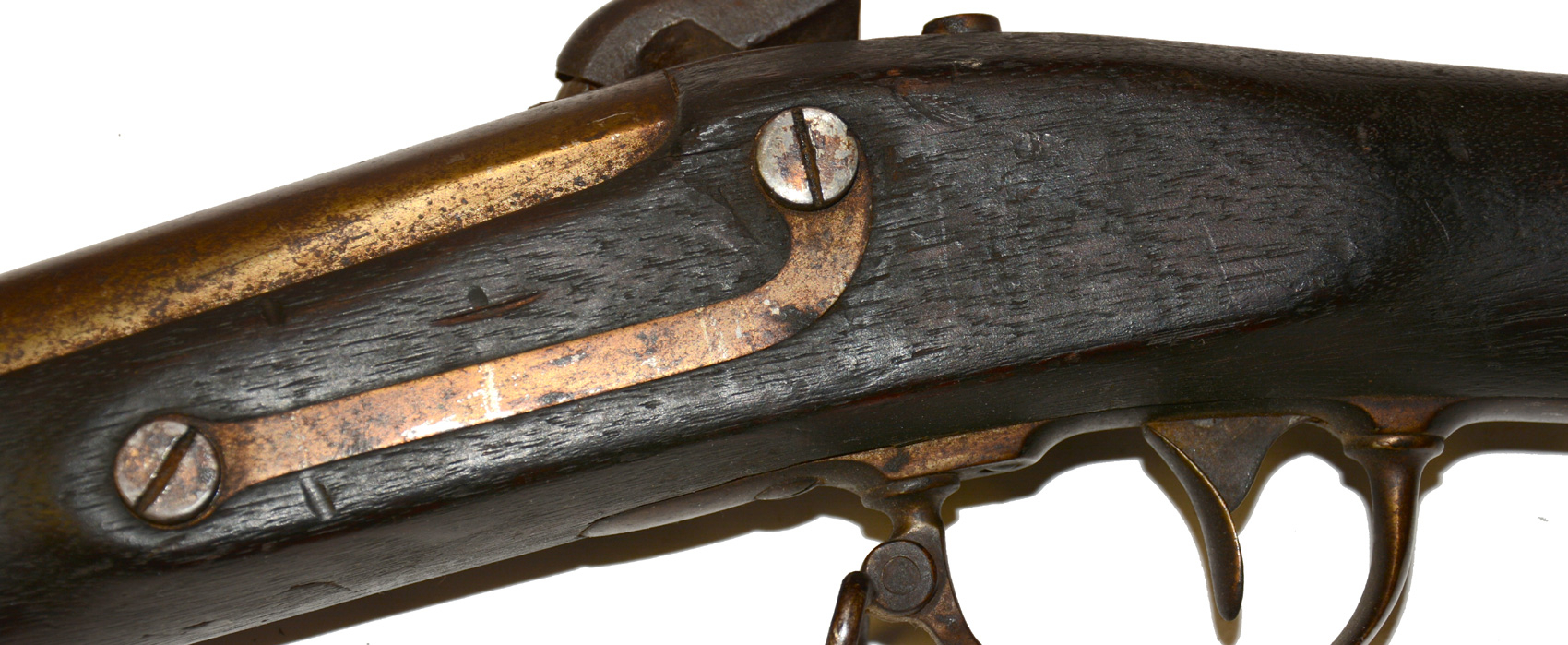

$1,650.00 SOLD
Quantity Available: None
Item Code: 846-365
This is a great example of a Confederate-used Model 1842 Springfield carried by a young South Carolina soldier who enlisted shortly after the state’s secession and carved his name and unit into the stock. It was subsequently reissued, apparently to two other soldiers, one of whom brought it home from the war and used it on the farm, but preserved its history.
The Model 1842 was the last of the .69 caliber smoothbore muskets intended for infantry of the line, and the first to be made at both Harpers Ferry and Springfield with interchangeable parts. Some 275,000 were produced from 1844 to 1855, with about 179,000 coming from Springfield. Some were rifled, to bring them up to par with the 1855 series of arms, but many remained in their original smoothbore configuration and were in the hands particularly of many early and mid-war regiments on both sides.
The buttstock of the musket carries several sets of initials, including an “R” on both sides and an “EW” and a “T.T.” on the left. The first and primary owner, however, seems to have been Archibald McIntyre, who deeply carved his name and unit along the center of the right butt flat: “A. McINTYRE” in large and small upper case letters, over “1st R[…] SCV.” Just in front of his name is an “A” and two uprights that might be from an “M,” indicating he was at first going to use just his initials. The soldier is Archibald McIntyre, Jr., Co. K of the 1st South Carolina Volunteers, later killed in action at Antietam while serving as the company 2nd Lieutenant.
McIntyre was born 15 April 1840 in Marion County, SC, one of ten children born to a Scottish immigrant father who married the daughter of a local figure. The elder McIntyre died in 1850, leaving a substantial estate that was successfully managed by widow. The 1860 census catches Archibald, Jr., living in Marion County with his widowed mother, three brothers and a sister. His mother is listed with a personal estate worth $150,000 and real estate valued at $100,000. Each of the three oldest children, including Archibald, has a personal estate valued at $20,000. Needless to say, these are substantial sums. (The same census picks up a twenty-year old Archibald McIntyre from South Carolina, living in Princeton, N.J., as a student, so there is a possibility he was at college there and left when war loomed, but we have not pursued this.)
After Lincoln’s election in November 1860 and South Carolina’s secession in December, the state mobilized some extant militia units, particularly in Charleston, given the presence of the federal garrison, which withdrew into Fort Sumter. The state also authorized the formation of an infantry regiment for six-month’s service that would consist of companies from different parts of the state, but organize in Charleston. Both Archibald McIntyre and older brother George were enlisted at Charleston on 5 January 1861 in a company from Marion County that became Company K of the 1st South Carolina Volunteers, which was formally organized on January 7 under the command of Col. Maxcy Gregg. George McIntyre received a commission as the company 2nd Lieutenant and Archibald as a private. This would most likely mark the point when he received this musket.
He had time to carve his name into it. The regiment was posted on Sullivan’s and Morris Islands, drilling and doing picket duty while tensions escalated. The regiment was present and under artillery fire when the bombardment of Sumter began in April, but suffered no casualties. A week later, however, the regiment was asked to join the Confederate service and the “greater portion” did so, with the regiment mustering out of state service on April 22 and into CS service on April 23 for the remainder of its six-month term as the 1st SC Regiment of the Provisional Army of the CS. In this capacity they were transferred to Richmond in June and posted to Manassas Junction and Fairfax Courthouse. From there they saw their first field service on June 16-17 as part of a small expedition to Vienna, Va., that drove back a trainload of Union troops, and by one newspaper report were later permitted to add Fort Sumter and Vienna as battle honors to their flag.
In July the regiment returned to Richmond for muster out from their six-month’s service and reorganization “for the war.” At this point the musket likely left McIntyre’s hands, with a good chance of it seeing action at Bull Run and subsequent battles carried by “R,” “EW” or “T.T.” who added their initials on the stock. McIntyre and his brother were among the officers and men who rejoined their old field officers in the new 1st South Carolina, George advancing to First Lieutenant and Archibald enlisting on August 12 and receiving a commission as 2nd Lieutenant on August 19. Both were again in the same company, now designated as Company E.
From September 1861 to April 1862 the regiment served at Suffolk, Va., and Goldsborough, NC, before returning to Virginia and in late May joining a South Carolina brigade under Maxcy Gregg, promoted to Brigadier General in December. As part of Hill’s Division, the regiment was under fire and took casualties in the Seven Days Battles in front of Richmond at Mechanicsville, Gaines Mill (20 killed and 125 wounded,) and Frazier’s Farm. When the action shifted to Pope, the division joined Jackson and the brigade held the left of Jackson’s line along the railroad cut at Second Manassas, repelling repeated attacks in twelve hours of fighting on Aug. 29, the regiment losing 24 killed and 119 wounded. McIntyre met his fate at Antietam on September 17. After a forced march from Harper’s Ferry, the division arrived just in time to reinforce the right Confederate right against Burnside’s belated attack and counterattack. McIntyre was killed in action in the fighting, likely on the Otto farm, and buried on the field. He had married the preceding December. His widow gave birth to their son, whom she named Archibald, on October 14, less than a month after her husband’s death. McIntyre’s brother George survived Antietam, later to lose his left arm at Chancellorsville.
The musket obviously had a subsequent life of its own. The soldier who brought it home had the barrel shortened at some point to about 32 inches, a clean-out screw added to the bolster, and the forestock taken down to just above the first barrel band to lighten it for use as a shotgun. He left the other mounts in place, including the sling swivel on the triggerguard. The barrel date and barrel proofs are not visible, but the metal is smooth and not pitted, indicating he took care of it. The lockplate still has a crisp “Spring/field/1852” at the rear and an U.S. eagle over “U.S.” forward of the hammer. The lock shows a dark gray and the other mounts a mix of gray and thin superficial brown. For all its service, the musket’s wood is actually quite good in color and fit to the metal and there are no large chips, cracks or breaks. It shows just average service dings and the carved initials and Archibald McIntyre’s personal and unit identification are part of its history- kind of a message to us that he was there. [sr][ph:L]
~~~~~~~~~~~~~~~~~~~~~~~~~~~~~~~~~~~
THIS ITEM, AS WITH ALL OTHER ITEMS AVAILABLE ON OUR WEB SITE,
MAY BE PURCHASED THROUGH OUR LAYAWAY PROGRAM.
CLICK HERE FOR OUR POLICIES AND TERMS.
THANK YOU!
Inquire About IDENTIFIED CONFEDERATE-USED M1842: STOCK CARVING BY ARCHIBALD McINTYRE CO. K 1st SOUTH CAROLINA VOLS, LATER KILLED AT ANTIETAM
Most Popular
Historical Firearms Stolen From The National Civil War Museum In Harrisburg, Pa »
Theft From Gravesite Of Gen. John Reynolds »
Selection Of Unframed Prints By Don Troiani »
Fine Condition Brass Infantry Bugle Insignia »
featured item
CDV OF 2ND LIEUTENANT CHARLES E. CROW, 4TH VA. (PURCELL) LIGHT ARTILLERY
This is a very nice CDV photograph of Charles E. Crow in Confederate uniform. It appears to be a second-generation image; photo of an existing photo. Regardless, the picture is clear with good contrast. Crow wears a Confederate 2nd lieutenant's,… (1138-988). Learn More »


